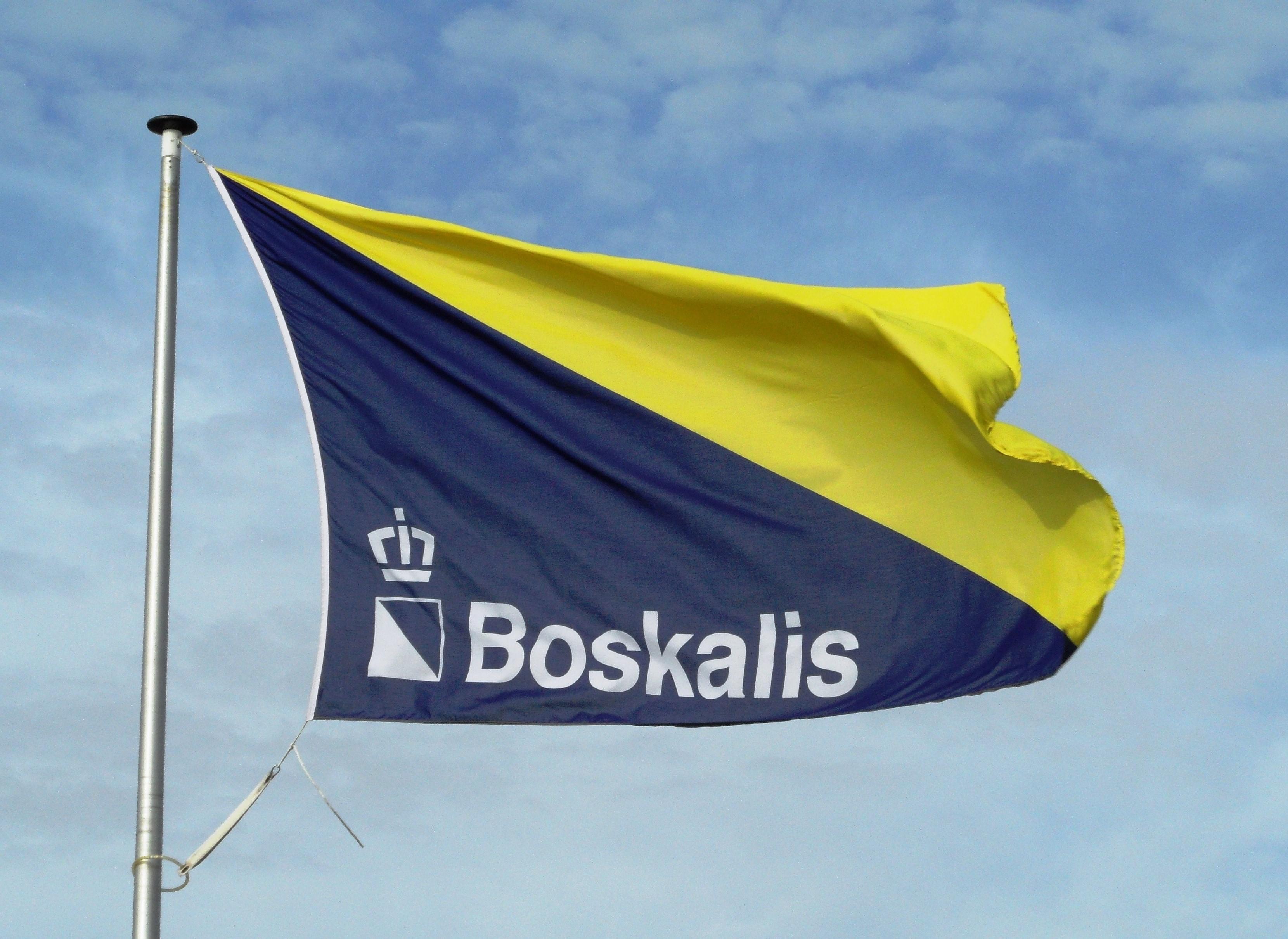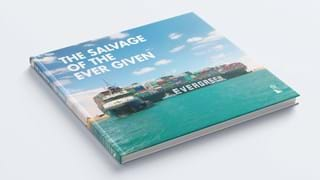A series of vessel groundings produced a run of Lloyd’s Open Forms for SMIT Salvage during the second half of 2012. They involved a number of cases in the Asian region, including the 735 TEU container vessel Conmar Cape. This vessel grounded in the Philippines, in the Subic Bay area. This 2002-built, German-owned vessel grounded during early November. A SMIT Salvage team responded and, upon arrival, found the casualty sitting on rocks and heavily damaged. The team managed to refloat her by a combination of retrimming and reballasting, without the need for lightering. This project was brought to a successful conclusion in association with local partner Malayan Towage & Salvage.
Other Asian cases include the Petrobras tanker Itaperuna, aground at the Isle of Bintang, in Indonesian waters adjacent to Singapore. A response was organised on commercial terms. This vessel had just left drydock when she had the misfortune to strike a rock pinnacle. This caused substantial bottom damage, including a large gash, 18 m long by up to 2 m wide.
This casualty was in ballast and at anchor, with internal spaces – including the engineroom – flooded. The vessel was retrimmed, stabilised and redelivered at Singapore on October 29, nine days after the commencement of salvage work.
A third Asian case concerned the 30,000 dwt, double-hulled product tanker Prathiba Cauvery, which was at anchor off the Indian port of Chennai when the grounding occurred. The tanker dragged her anchors in a Monsoon storm and was eventually driven onto the beach.
A Salvage Master and team soon arrived on site and carried out an initial inspection. There was a great deal of ballast within the casualty and the generators and other systems could not be activated. Ballast was discharged by gravity and by the use of four powerful submersible pumps. This LOF service was performed by SMIT India Marine. The 1981-built vessel was refloated with the assistance of a chartered tug of 200 tonnes bollard pull. The casualty, which lacked anchors at that point, was controlled after the refloating by an Indian Emergency Towing Vessel. The Prathiba Cauvery was redelivered in the port of Chennai.
Elsewhere in the world, responses included assistance for the grounded 500 TEU container feeder vessel Vega Sagittarius. Having just departed the port of Nuuk, Greenland, she ran aground on August 16 and breached all double bottom tanks. The grounding occurred within one hour of High Water. The salvage team – from Houston and Rotterdam – discovered that the casualty was sitting on multiple rock pinnacles and had a six degrees list. Her stern was in deep water but her unsupported bow extended well above the low water mark.
Logistics was an important issue during this operation. Air connections to Greenland are via Copenhagen, yet SMIT’s team arrived within 24 hours of the grounding. Equipment was flown into the nearest suitable airport and then trucked across Greenland to Nuuk.
Vega Sagittarius was a new vessel, delivered in 2012. The casualty’s position was precarious and her condition was deteriorating rapidly. Refloating would be challenging. Calculations revealed that a full discharge of cargo, coupled with the selective pressurisation of breached spaces, ballast discharge and external pull force, would be required to free this casualty. The remote location of the grounding site was another challenge. Nevertheless, a major response was organised and a powerful tug (175 tonnes bollard pull) was mobilised from West Europe. Fortune smiled on this operation, which began to unfold during a period of unusually benign weather. The casualty’s own gear was used to discharge containers to a local barge, which made a “shuttle run” to a reception area in the port. The boxes had to be moved to the casualty’s stern - where the barge had sufficient water to go alongside. The casualty was refloated on August 29 and redelivered the next day.
Refloatings at mid-year included the 175,000 dwt capesize bulk carrier Flash, which grounded in Tunisian waters. The vessel went aground on a rocky outcrop off the island of Galite, breaching several ballast tank. Subsequently, the engineroom flooded. Flash was on a voyage from Hampton Roads, in the
USA, to Taranto, Italy, with a cargo of 165,000 tonnes of coal.
A Salvage Master and an advance team arrived on scene, together with a support tug mobilised from Italy. SMIT Salvage local partners OMMP also participated in this response. It was obvious, from the first, that an substantial part-discharge of the coal cargo would be required, if refloating was to be achieved. Work began promptly. A tanker arrived on scene to take off bunkers. A small, geared combi carrier, the Veelerdiep, began taking off cargo. A second lightering vessel, the HR Constellation, was also involved in the part-discharge, followed by the larger, 70,000 dwt geared vessel Barkal. In total, some 70,000 tonnes of coal was offloaded, with simultaneous and careful ballasting keeping the casualty stable as the operation progressed. A refloating was achieved with the assistance of large pumps, installed in hold no. 4 following discharge of this space.
The availability of an empty hold was essential for ballasting amidships. When the large bulk carrier floated free, the powerful tug Union Manta was on hand to control her. This tug was later succeeded by the Union Princess. In addition, a Turkish tug attended on-scene, acting as a salvage support platform. The refloating was achieved in early August and the Flash was redelivered three weeks later.
Response to shipboard fires
SMIT teams responded to several ship fires in the August/September period. One case involved the newly-converted FPSO ARC II/ Cidade de Itajai, off Singapore. Fire broke out in the engineroom during sea trials. SMIT’s Singapore base responded as the crew abandoned the FPSO. The fire was brought under
control and then extinguished during the following day. With her draft returned to port level, the FPSO was towed and escorted by five tugs back to the shipyard, where she was redelivered.
The second fire case concerned the cable layer Chamarel, which suffered an engineroom fire whilst off the Namibian coast. The fire spread rapidly and burnt out the accommodation. The crew abandoned the vessel, which then drifted ashore at a remote location (some 200 km north of Walvis Bay). The operation to remove the environmental threat from this casualty was undertaken by SMIT’s base in Cape Town, reinforced by a team from Rotterdam. The oil was pumped to a buffer tank on board, then to a reception bladder ashore and was ultimately transferred to road tankers. At the time of writing, technical investigations were under way, to explore the best way to remove the vessel from the beach.
Other salvage/support operations
The more unusual tasks undertaken by SMIT Salvage in recent months included the pumpout of two of New York’s deepest subway stations, following Tropical Storm Sandy. The work was carried out in association with SMIT’s partner, Donjon.
In South America, a difficult oil removal operation was undertaken at Sao Luis, where the Korean-owned jack-up construction platform Sep Orion capsized alongside a jetty extension (designed to accommodate 400,000 dwt vessels). The quantity of oil inside was relatively small, amounting to around 30 m3 , but the difficulties of removal were immense, due to zero visibility and very strong currents at the site. Diving was limited to a maximum of just 30 minutes on the neaps. This contract included inspection, reporting, the recovery of the oil and other pollutants and stabilisation (Sep Orion had suffered a broken leg).
Stabilisation was achieved by tying back the leg to the main structure. In the meantime, the scope of work was expanded with debris recovery as well. At time of writing, SMIT Salvage has also started preparations for the mobilisation of specialised equipment to remove the platform.
Let's talk
IR & Public Relations
For questions concerning our press and news releases contact our Corporate Communications department.


